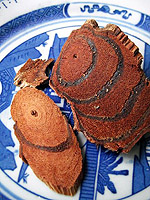Invigoration Therapy
In TCM external medicine, invigoration therapy is employed in the late stage of disease development or when individuals show various signs of weakness. For example if the wound is difficult to close and the pus appears thin and clear, physicians will treat by nourishing blood and replenishing qi. When individuals present with a skinny and pale appearance, fatigue and mouth dryness, then yin should be nourished and body fluid production promoted. If there is extensive septic infection accompanied with darkish ulcers, then individuals should be enhanced by warming and replenishing qi. If skin lesions are dry, peeling, cracked or thickened, then blood enriching and moisturizing herbs should be added.
 Generally, tonic remedies are used to restore body resistance, promote wound healing and new tissue growth.
Generally, tonic remedies are used to restore body resistance, promote wound healing and new tissue growth. - Qi deficiency: commonly selected herbs are astragalus root, pilose asiabell root, largehead atractylodes rhizome, and poria;
- Blood deficiency: commonly selected herbs are angelica root, processed rhemannia rhizome, Suberect spatholobus stem, and white peony root;
- Yin deficiency: commonly selected herbs are rhemannia rhizome, dwarf lily-turf tuber, figwort root, yerbadetajo herb, and fragrant Solomonseal rhizome;
- Yang deficiency: commonly selected herbs are cassia bark, common curculigo rhizome, epimedium, morinda root and deerhorn.


